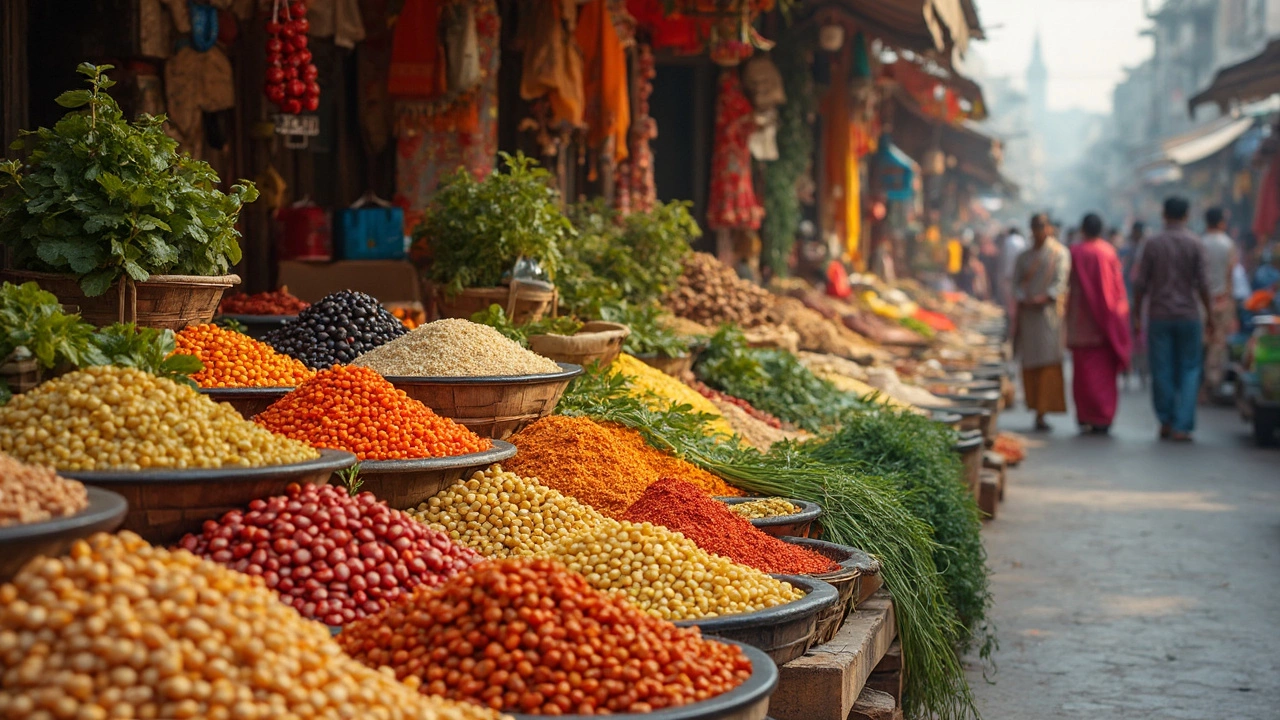Vegetarian Food: Easy Indian Recipes, Tips, and Health Benefits
If you think vegetarian Indian cooking is hard, think again. With a few pantry basics and a pinch of spice, you can whip up meals that are tasty, healthy, and satisfying. This guide shows you simple recipes, smart swaps, and why going plant‑based works so well with Indian flavors.
Easy Vegetarian Recipes to Try Today
Start with dishes that need just a handful of ingredients. Masala Dal is a classic – simmer lentils with turmeric, cumin, garlic, and tomatoes, then finish with a tempering of mustard seeds and curry leaves. It’s ready in about 30 minutes and pairs perfectly with rice or roti.
Another quick favorite is Vegetable Upma. Roast semolina lightly, then stir‑fry mustard seeds, chilies, carrots, peas, and onions. Add water, let it thicken, and garnish with fresh coriander. Breakfast, snack, or light dinner – it fits any time.
For a heartier option, try Paneer Bhurji. Crumble paneer, sauté with onions, tomatoes, green chilies, and a mix of garam masala and turmeric. It’s protein‑packed, ready in 20 minutes, and great with paratha.
Don’t forget Chickpea Sundal, a South Indian snack. Boil chickpeas, toss with mustard seeds, curry leaves, grated coconut, and a squeeze of lemon. It’s crunchy, tangy, and perfect for movie night.
Health Benefits & Smart Swaps
Indian vegetarian cuisine already leans on beans, lentils, and vegetables, which means plenty of fiber and protein. To keep dishes light, swap regular oil for a drizzle of mustard or sesame oil – the flavor stays strong while calories drop.
If a recipe calls for cream, use plain Greek yogurt or coconut milk instead. Both add richness without the heaviness of heavy cream. For a low‑carb twist, replace rice with cauliflower rice or use almond flour for dosa batter.
Spices aren’t just about taste; they bring antioxidants too. Turmeric fights inflammation, cumin aids digestion, and coriander helps balance blood sugar. Adding a pinch of these spices boosts health without extra effort.
When you’re grocery shopping, pick fresh, locally sourced vegetables. They taste better and keep your meals grounded in regional flavors. Stock up on staples like red lentils, chickpeas, and whole‑grain flours – they’re affordable and versatile.
Finally, plan ahead. Cook a big batch of dal or chickpeas on Sunday, store in the fridge, and mix with different veggies during the week. This saves time and keeps your menu varied.
Vegetarian Indian cooking is all about using what you have, seasoning boldly, and making swaps that fit your lifestyle. Try one recipe today, experiment with a spice, and you’ll see how easy and rewarding plant‑based meals can be.
What's the Most Filling Vegetarian Food?
Dive into the world of Indian vegetarian food to discover some of the most filling and satisfying plant-based meals. We'll explore why these dishes are not only hearty but packed with flavors that keep you coming back for more. Whether you're a lifelong vegetarian or just looking for new meals to try, learn which ingredients keep you full and satisfied. From beans to grains, get nifty tips on how to make the most out of your diet without missing meat. Let's make meal planning exciting and filling!
